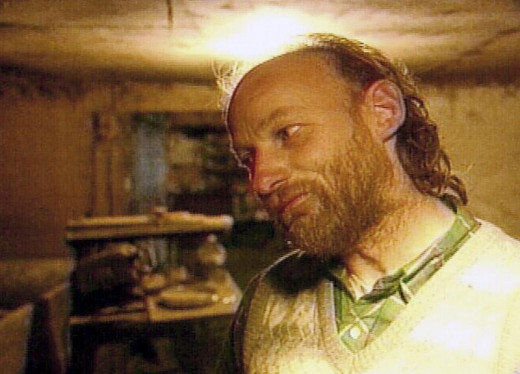Convicting "No Body" Killers

Getting Away With Murder
Imagine that you think you hear screaming from next door. You walk outside your house to see what is going on, in time to see your neighbor leaving his house with a few plastic bags. He then returns to his house and hauls away a stained mattress-- and later returns with a power saw. You hear the buzz of a saw grind away for several hours. You shrug it off-- you decide that the screams that you heard weren't real and that your neighbor is probably just doing a little work around the house. A few days later, police arrive at your doorstep. They tell you that your neighbor's wife has gone missing, and the investigators want to know if you've seen anything suspicious lately.
A similar situation occurred in 1998 in Dedham, Massachusetts. John D. Romano may very well have beaten his wife Katherine to death and then returned to cut her up with a power saw in order to hide the evidence. What's more, prosecutors claimed that Romano chopped up his wife's body in front of his two year old child.
Even in the age of DNA evidence, "no body" murders are very hard to prove. When bits of flesh and bone taken from the saw were sent to the lab for analysis, the results came back as a positive match for Katherine Romano. Still, Romano ended up being convicted of 2nd degree murder instead of 1st degree murder and almost walked. If it were not for the bits of tissue found in the saw, Romano may have gotten away with killing his wife.

Blame a Witch
In the 17th century, proving murder was even more of a problem if a corpse could not be identified. In 1660, an unusual case that occurred in Britain in a village called Campden prompted the Crown to institute what came to be interpreted as a "no body, no murder" policy. The case involved a man named William Harrison who mysteriously disappeared.
Three people living in Campden had the misfortune of being suspected of witchcraft prior to Harrison's disappearance, and the villagers accordingly rounded them up, accused them of murder and hanged them. Two years later Harrison returned with a suspicious story about being abducted by Turks and taken to a harem. Probably, Harrison was just hiding out somewhere and laying low for some reason. Nobody was ever able to figure out why Harrison disappeared in the first place, but it was clear that the legal system had failed. As a result of what came to be known as the Campden Wonder, the Crown changed the rules and for 300 years murder cases in Britain were dismissed if a body could not be found.
The End of "No Body, No Murder" In Britain
In 1934, a British man named Thomas Davidson was finally convicted of murder despite the fact that a body was never recovered-- but only after a confession and other written proof was obtained. Police found two letters from Davidson to his wife about the the murder, and they were used as evidence in the trial.
Davidson initially provided the authorities with a confession, but changed his plea during the trial to avoid punishment. He also changed his story about the circumstances surrounding the death of his son several times. First Davidson said he was trying to kill himself and his son by jumping into a canal. In this version of the story, Davidson claimed to have had survived the jump, even though his son did not. Then he changed his story again and said that his son had gone missing. In this version, Davidson was supposed to have "found" his son's body in the canal while scouring the neighborhood. Whatever really happened, Davidson's son's body was never found. Still, Davidson had already confessed several times and so the jury convicted him for murder.
The "no body, no murder" policy officially ended in Britain in 1954 when a Polish man named Michail Onufrejczyk was convicted of killing his business partner Stanislaw Sykut. Bone fragments and blood were found in Onufrejczyk's kitchen, which provided enough evidence for the jury to conclude that Sykut had been murdered. Justice Goddard responded to a "no body" appeal with the following statement:
"Things had moved on since the days of the Campden Wonder."
"No Body" Law in the United States
In the United States, laws around murder cases that involve a body that can't be located vary depending on the state. Often plea bargins result in the murderer revealing where the body is hidden in exchange for a less severe conviction. Also, some people who are convicted of murder try to seem crazy in order to help nail down an insanity plea. As a result, "no body" convictions are rare.
Prosecuting Attorney from the District of Columbia Thomas DiBiase's collects information about "no body" convictions on his site nobodymurdercases.com. He has compiled a list of 378 murder trials there. Sixteen of the trials resulted in death penalties being awarded to the defendant, and 89% of the cases resulted in a conviction.
Notable "No Body" Trials in the United States
In Arkansas, an innocent man named Charles Hudspeth was sentenced to death and executed after his wife Rebecca disappeared in 1886. Hudspeth was killed in 1892. In 1893 Hudspeth's lawyer was able to find Rebecca, who was still alive and living in Kansas.
In California, Leonard Ewing Scott was convicted in 1957 after a jury was convinced that Scott had buried his wife in the supports of a San Diego freeway. Her personal items were found among some ashes near an incinerator. Scott was originally sentenced to life in prison, but was released in 1978. After his release, Scott admitted to murdering his wife.
California Chef Slow-Cooks His Wife
Recently, a California cook named David Viens claimed to have slow cooked his wife Dawn's body for four days after coming to the conclusion that she had been stealing from his restaurant. Dawn's body was never found, but Viens claims to have disposed of it in a dumpster. The reason he decided to boil her body was never made revealed, but the case made headlines because his explanation for what happened to the body was gruesome.
In this case the jury bought into the defense's story about how Viens's wife died accidentally after he duct taped her mouth shut. According to Viens, he did this to his wife in order to prevent her from running off and snorting cocaine. Viens said he panicked after he realized that she was dead-- which is why he felt the need to boil the body. Viens also claimed to have kept the skull to store it in his mother's attic, but a search of the attic did not yield any evidence.
There is some confusion about what really happened due to the fact that Viens changed his story multiple times. First, Viens claimed to have disposed of the body at his restaurant. This is disturbing on many levels. For one thing, if Viens really boiled the body he probably boiled it at the restaurant. Also, what if Viens destroyed the evidence by feeding it to his customers? It could be possible, however, that he boiled the body to get rid of the smell of decay. In any case, the body was never recovered and as a result the truth may never be discovered.

Their Bodies Were Fed to Pigs
In Canada, Robert Pickton was accused of feeding 26 prostitues to pigs in 2007. In this case, grisly physical evidence was obtained: two cleaved, severed heads were found in Pickton's refrigerator and human bones were unearthed from the dirt below the his pig farm. In spite of the physical evidence to the contrary, Pickton claimed innocence. This shows you the lengths to which killers will go to hide the body. If Pickton had thoroughly disposed of all the evidence, the murders would have been much harder to prove. Even though the prosecution had located several of the bodies, at the end of the Pickton's trials he was only charged with six second degree murders. Originally, Pickton was implicated in the deaths of 20 or more additional women.



